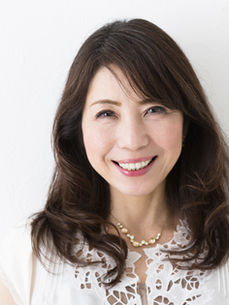
ELECTROLYSIS
Progressively permanent hair removal for small areas such as the upper lip or chin.
Over 26 years of experience in electrolysis.
How does it work?
A fine sterile, disposable probe is inserted into the hair follicle (a natural opening in the skin). A small amount of energy (Heat, or a chemical reaction, or both blended together) is skilfully discharged within the hair follicle. The aim is to damage the base of the growing hair in order to cut off the blood supply and nutrition to the hair, causing progressively permanent hair destruction.
There are three different methods available, all of which are described below. We mainly use the blend but the method best suited to you will be determined during your patch test.
Galvanic electrolysis
The galvanic method works by using a Direct Current (DC) of electricity. When the needle is inserted, the electricity coming down the needle causes the salt and water in the skin around the probe to be chemically altered. Salt, water and electricity combine to produce a small amount of sodium hydroxide. If enough is produced, this solution can damage the cells that cause hair growth.
Thermolysis/Diathermy/Short Wave Electrolysis
The thermolysis method, also known as diathermy or short wave, works by using an Alternating Current (AC) of electricity. This electricity causes the water molecules in the skin around the needle to vibrate, which creates heat. If enough heat is produced, it can damage the cells that cause hair growth. This method is good for fine hairs
Blend Electrolysis
The Blend Method combines both the Short Wave and Galvanic procedures. Sodium hydroxide is created and is then heated by the electricity. This heat, plus the chemical solution, then destroys the hair tissue. This method is good for strong, curly hairs or distorted follicles.
During a course of treatment, there will be a gradual decrease of hair density and growth, for example, it may take a minimum of 8 sessions PER HAIR until it has permanently gone.
How many treatments will I need?
The number of electrolysis treatments needed to remove hair permanently varies from person to person. The total time it takes to complete the treatments can range from a few months to a number of years.
Some factors that can affect the number of treatments needed include: Hair type and thickness, Skin type and sensitivity, Skin hydration, Quantity of hair, and Pain tolerance.
During the course of treatments, there will be a slow, gradual decrease of hair density and growth.
For example it may take a minimum of 8 sessions PER HAIR until it has permanently gone.
Does it hurt?
Each patient responds differently. During your first session, the current intensity is low until we find the 'setting' that works for you. Some explain it as a 'sting', others as ' pin-point heat'. But it's important to note that the settings can be adjusted to your tolerance and comfort.
If this is not tolerated, then Laser Hair removal is the preferred option.
Can I have it on larger areas?
If the hair growth is quite significant, or over a larger area, laser hair removal is a better option and a very effective and popular treatment at Westfield Clinic, and is often recommended to clear the majority of large areas before having electrolysis for any remaining few hairs.
Are there side effects?
Following treatment, the skin will show an initial pinkness (erythema) with evidence of localised histamine swelling all being part of the totally normal skins healing response. Scabs will form within the first few days, and skin must be allowed to heal.
Am I suitable?
It is suited to all hair colours including blonde, white and grey.
You will need to commit to regular treatments, sometimes as frequently as fortnightly to begin with.
A consultation and patch-test is required before treatment can commence.
For hairs that are brown, black and strawberry blonde then laser/IPL is the preferred method with quicker results.
Some medical conditions mean you are not suitable for electrolysis - there is a lsit at the bottom of the page.
Can I combine it with laser/IPL?
Yes, sometimes alternating both methods is recommended for those with a mixture of dark hair and blonde/white/grey hairs. Laser had advanced over the years and our system also treats the hair germ cells!
What is hirsutism?
Hirsutism is a condition of unwanted, male-pattern hair growth in women. Hirsutism results in excessive amounts of hair on facial and body areas in women where men typically grow hair — face, chest and back.
Prior to puberty, the human body is covered in very fine, vellus hair. This is replaced during puberty in certain parts of the body by thick, long, darker hair known as terminal hair under the influence of androgens. In women with hirsutism some vellus hair is transformed into terminal hair, which is not supposed to happen.
Hirsutism can be caused by either an increased level of androgens, or an oversensitivity of hair follicles to those androgens. Although androgens are considered “male” hormones, women also have and need them, but in smaller quantities.
Whilst hirsutism itself is not a serious medical condition, it may well be the symptom of an underlying cause for concern, therefore speaking with your GP before beginning hair removal treatment is recommended.
Prices:
10% discount on a pre-paid course of 6 sessions
Consultation and patch-test is essential before full treatment can begin.
up to 15 mins £27 - Course of 6 £146 (save £16)
up to 30 mins £46 - Course of 6 £248 (save £28
up to 45 mins £62 - Course of 6 £335 (save £37)
up to 60 mins £76 - Course of 6 £410 (save £46)
For body areas please contact us for a quote.
(price review due Sep/Oct)
Interesting facts
-
There can be up to 1000 follicles per square inch of skin, depending on the area on the body.
-
Your entire body has a total of about 5 million hair follicles. You’re born with all of your hair follicles.
-
There are very few parts of your body that don’t have any hair. These include the palms of your hands, soles of your feet, and the red part of your lips.
-
As you age, your hair is more likely to turn grey or white. In fact, after you turn 30 the likelihood of going gray increases about 10 to 20 percent with each decade.
Contraindication list (not suitable):
Blood Thinning Medication
Cochlear implants
Dermographia
Haemophilia
Keloid ScarringPacemaker
Pregnancy (1st Trimester) – Then not below neck with Galvanic or Blend*
Recent Scar Tissue (in treatment area)
Rosacea [active] (in treatment area)
Skin Diseases/Disorders
Sunburn (in treatment area)
GP permission required with:
Diabetes with
Epilepsy
Heart Conditions
High Blood Pressure
Lupas


























